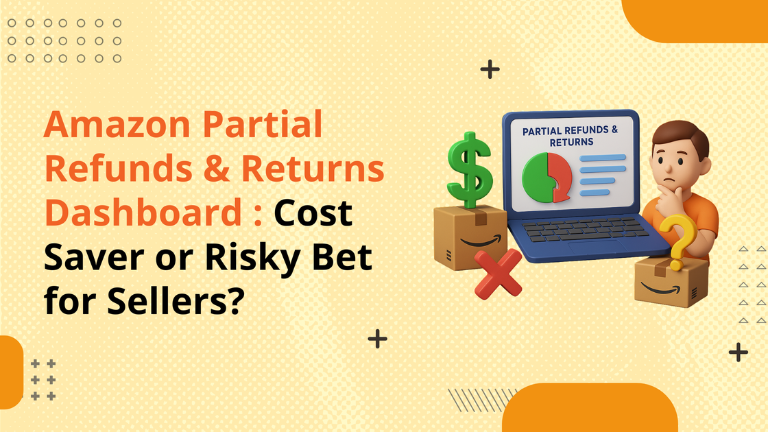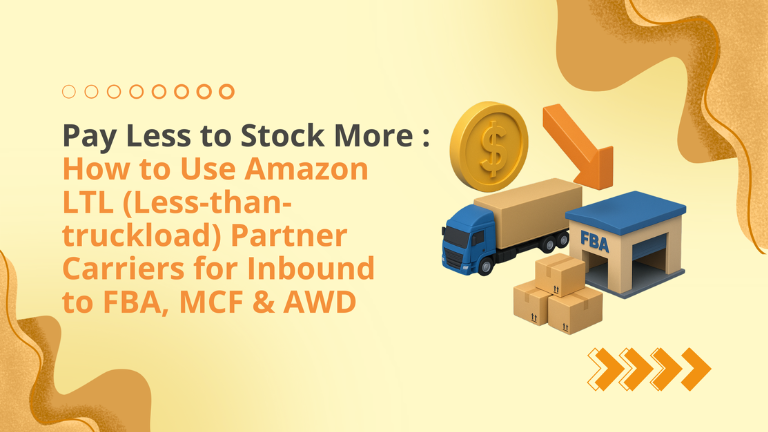Amazon’s latest update is shaking up how sellers handle returns. The FBA Partial Refunds Program and Returns Insights Dashboard are designed to make refund management more efficient — and possibly cheaper — for sellers.
But with new opportunities come new risks. While Amazon says these tools will reduce return costs and improve buyer satisfaction, some sellers fear they could open the door to abuse or worsen return metrics that already affect listing visibility.
We’ll explain how the Partial Refunds system works, what sellers are saying about it, and how you can decide if it’s a cost-saver or risky experiment for your business.
Contents
What is the Amazon Partial Refunds Program?
The Partial Refunds Program allows sellers to offer refunds without requiring customers to return the product.
Sellers can:
- Set refund percentages at the ASIN level.
- Track refunds marked as “Complete – Return not expected.”
- Exclude non-returnable items like hazmat or hygiene products.
It’s now available in the US, UK, Germany, France, Italy, and Spain.
Amazon claims this approach benefits both sides: customers get faster resolutions, and sellers save on return logistics.
Potential Benefits and Risks
Benefits
- Lower logistics costs: Avoid shipping and restocking fees.
- Happier customers: Faster refunds build satisfaction.
- Operational efficiency: Fewer back-and-forths with customer service.
Risks
- Buyer abuse: Refund requests may spike as customers exploit the system.
- Return metric impact: Partial refunds still count toward your ASIN’s return rate.
- No reimbursements: Sellers don’t receive inventory credits.
- Data blind spots: Missing insight into how refunds actually affect overall costs.
Sellers have voiced concerns on forums and social channels that this system might encourage “discount seekers” instead of genuine buyers.
The New Returns Insights & Opportunities Dashboard
Amazon also introduced a Returns Insights & Opportunities Dashboard, giving sellers a clearer view of:
- Return reasons by ASIN
- Cost impact analysis
- Recommendations to lower returns
By monitoring these trends, sellers can identify products that might benefit from Partial Refunds — and those that shouldn’t be enrolled.
You can explore more about leveraging analytics in your seller strategy in our guide on Amazon Brand Analytics.
Data-Driven Takeaway
Think of Partial Refunds as a strategic lever, not a blanket solution.
Use data from the dashboard to:
- Identify high-return ASINs where refunding might save on logistics
- Exclude products prone to abuse
- Balance refund rates with brand reputation metrics
How Big Internet Ecommerce (BIE) Can Help
At BigInternetEcommerce.com, we help sellers interpret return and refund data to make smarter business decisions. Our team can:
- Audit your ASINs to identify refund-safe products
- Automate return and refund tracking through your dashboards
- Create custom reports that highlight potential savings and risk areas
Before enrolling in the Partial Refunds Program, let’s make sure it actually improves your bottom line.
Wondering if Partial Refunds can save your brand money — or cause more problems?
Schedule your strategy call with Big Internet Ecommerce today!
Follow Big Internet Ecommerce (BIE) on Instagram & LinkedIn to stay updated with the latest trends in Amazon selling.






